Duty Hour Rules
Making schedules that respect duty hour rules is a key capability of the MedRez.net Scheduling Tool.
Duty hour rules are highly configurable and can be different for each level of resident (PGY-1, PGY-2, etc..)
Configure the rules in the Resident and Staffs section, under the Settings tab.
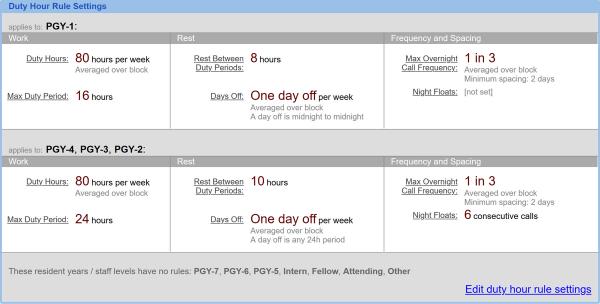
Tips for Editing Duty Hour Rules
- To edit rules click the “Edit duty hour rules settings” link
- Each rule can be changed by clicking on it to bring up a dialog box.
- Each rule can be enabled or disabled with a checkbox at the top of the dialog.
- After making changes to the rule, click the OK button to dismiss the dialog box.
- After you are done editing rules you must save them by clicking the Save button at the bottom of the Duty Hour Rule Settings area.
Tips for Shift Schedules:
If you are making a shift schedule (the kind of schedule you find in emergency medicine or in an ICU) make sure to change the Maximum Continuous Duty Period rule to the length of your longest shift. This will prevent the system from allowing back-to-back shifts.
Details on Each Rule
Let’s look at how each rule works:
Duty Hours
Sets the maximum number of Duty Hours per week, averaged over a block, for a Resident or Staff.
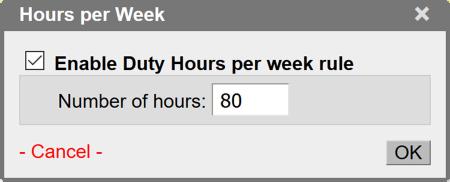
- The maximum hours in a block depends on this setting and the number of days that the resident is on the schedule.
- For this rule, the “number of days on the schedule” is the number days where the resident is on the schedule and not on a granted request that is of type “leave”.
- At-home Calls do not count towards this rule’s totals.
Maximum Continuous Duty Period Rule
Sets the maximum length of a continuous on-duty period.
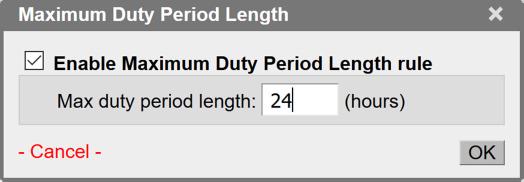
- While a duty period may be made up of several shifts or calls (such as a “short call” followed by an overnight “long call”) they must be adjacent. Otherwise the Rest Rule (see below) will be triggered.
- This rule also prevents any duty period from being scheduled after the end of an overnight In-House Call.
- At-Home Calls do not count as continuous on-duty periods.
Rest Between Duty Periods Rule
Sets the amount of rest required between each duty period.
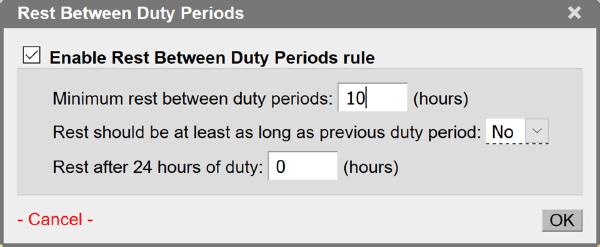
- Use any combination of the three settings.
- Leave an input box blank, or enter a ‘0’ to disable that setting.
- A rest period is started at each gap in scheduled duty.
Days Off Per Week Rule
Sets the required number of days off per week, averaged over block.
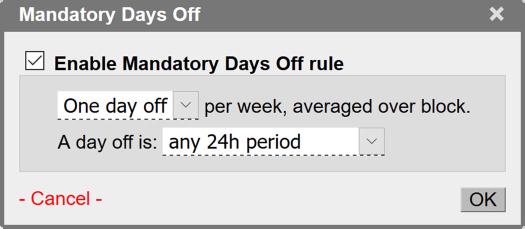
- The total number of days off required in a block is calculated based on the number of days on the schedule and not on leave.
- Days with no duty that overlap days where the resident is on leave do not count towards days off count.
- A “day off” can be any continuous 24-hour period free of duty, or a specific time period. Use one of the specific time periods that fits your schedule to ensure a resident’s post-call day does not count as a mandatory day off.
Overnight Call Frequency and Spacing Rule
Sets the average and absolute overnight In-House Call frequency, as well as the maximum call load for night floats.
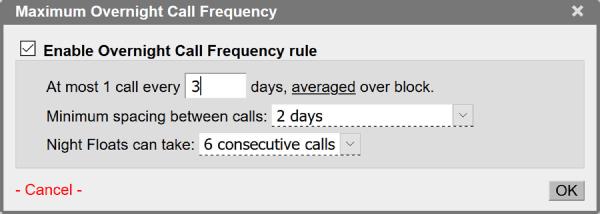
- Similarly to “Hours per Week” rule and “Days Off per Week” rule, the maximum number of overnight calls for the block is calculated based on the number of days on the schedule.
- In the case of this rule, the number of days on the schedule excludes leave requests and times during which the resident is a night float. Night float calls are dealt with separately with the “Night Floats can take X consecutive call” part of the rule.
- The minimum spacing between calls section ensures that no resident gets back to back in-house overnight calls, unless they are a night float.
- An “overnight call”, for the purposes of this rule, is an in-house call that passes through midnight. Night shifts do not count as overnight calls. Neither do “at-home” calls.